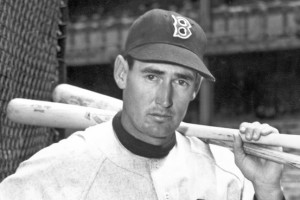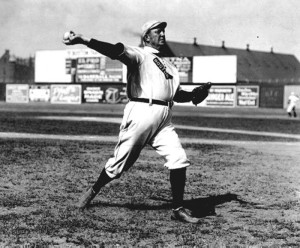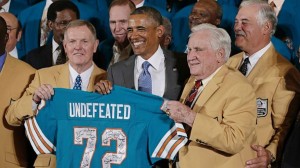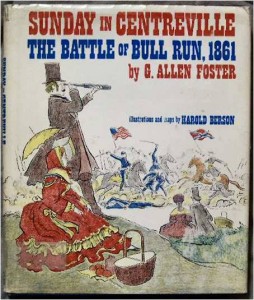Posted on
August 07, 2014 by
Martin Banks
For NASCAR fans, summertime means it’s time to load up some camping gear and head to the Poconos. The home of a pair of NASCAR Sprint Cup Series races held in June and August—the Pocono 400 and the GoBowling.com 400 respectively—the Pocono Raceway is one the most storied tracks in NASCAR history. Also home to the Pocono Indycar 500 and used by Sports Car Club of America along with motorcycle clubs and driving schools, the track gets a lot of use throughout the year.

The track is famous for its shape. Often described as a tri-oval, the track is actually closer to a triangle than an oval. It is unique in that its three turns are all different and modeled after turns from other tracks. Turn One has 14 degree banking and was based on the turns at the old Trenton Speedway. Turn Two, which has 9 degree banking and is also known as “The Tunnel Turn,” is similar to the Indianapolis Motor Speedway, while the 6 degree banking of turn 3 is based on The Milwaukee Mile.
But though NASCAR wouldn’t be the same without it today, there was a time when the Pocono Raceway nearly closed down for good. The raceway held its first race in 1968 on the three-quarter mile track. Three years later, the first 500 mile Indy race came to the Poconos on the two and a half mile rack and the first 500 mile NASCAR race at Pocono Raceway was held in 1974. But just as Pocono Raceway was getting its NASCAR start, the owners of the track, the Mattioli family were having some financial problems. Read the rest of this entry →
Tags: NASCARPoconosracingsports history
Category
NASCAR, Scott Huntington
Posted on
July 18, 2014 by
Martin Banks
Ricky Carmichael has taken a nontraditional path to the NASCAR circuit; he got there by absolutely dominating the motocross world. Born in 1979 in Clearwater, Florida, he first began racing motocross at a very young age. His parents were either very supportive of him or very nearly criminally negligent of him because he began racing at the incredible age of 5.

For the next ten years, he owned the American amateur races; as he went on to win an astonishing 67 titles. That’s nearly seven titles per year from age 5-15. Then in 1996 he decided to stop beating up on all the poor amateur racers and made the jump to pro racing. You know how sometimes there’s a bit of a learning curve when an athlete turns pro? You always hear people talking about college quarterbacks being stunned their rookie years by the speed of the NFL and so on. Well, there was no such harsh transition for Ricky Carmichael. In 1996 he won the AMA Motocross Rookie of the Year Award racing for the Kawasaki team.
Read the rest of this entry →
Tags: MotocrossmotorcyclesRick Carmichaelsports history
Category
Motocross, Scott Huntington, Sports History
Posted on
June 05, 2014 by
Martin Banks
On this week of sports history in 1959, the great Ted Williams got the 2,500th hit of his Hall of Fame career. And since it’s always an appropriate day to talk about the fantastic talent of Williams, this occasion is as good as any. Let’s take a look at what he did for the Boston Red Sox and how he earned the nickname, “The Greatest Hitter Who Ever Lived”. Williams did just about everything a hitter can do, going from a young baseball player in San Diego to a first-year Hall of Famer and baseball legend.

From Birth to Baseball
Williams, who was named after Teddy Roosevelt and his father, was born in San Diego as Teddy Samuel Williams in 1918. Before he could earn the nicknames “The Kid”, “The Splendid Splinter” and “The Greatest Hitter Who Ever Lived”, Williams was first taught how to play ball by his uncle, Saul Venzor. Williams starred on his high school baseball team at Herbert Hoover High as a pitcher, garnering himself offers from the New York Yankees and St. Louis Cardinals. However, his mother thought he was too young to move far away, so Williams signed on to play for the minor league San Diego Padres.
It didn’t take long for Williams to be noticed after playing ball for San Diego by Red Sox general manager Eddie Collins. After signing with Boston and playing some minor-league ball, Williams got his chance in The Show. Williams played from 1939-1942, including his legendary 1941 season (which we will talk about later), before being drafted into the military. Williams would serve on both the U.S. Marine Corps and the U.S. Navy from 1942 -1945 and then again from 1952-1953. Williams’ unique major league career didn’t keep him from becoming at least one of the greatest. Fittingly, Williams homered on his final-ever at bat in 1960. Read the rest of this entry →
Tags: Baseballgreatest hittersports historyTed Williams
Category
Baseball, Scott Huntington
Posted on
June 02, 2014 by
Martin Banks
We all know the saying, “records are meant to be broken.” However, that may not be the case for some of the greatest records set in the world of sports. No matter if it is in baseball, football, hockey, basketball or any other sport, some achievements propel individuals or teams into legends. And while time will continue and records are never safe, certain incredible records have a chance to never be broken. Here are some of the feats throughout the sports world that may stand as all the others continue to fall.
511 Wins- Cy Young

It’s amazing to think about a pitcher winning over 500 baseball games as a pitcher, yet that’s exactly what Young was able to accomplish. It is certainly a different game now with pitchers taking more time off in between starts, making Young’s record seem untouchable. 300 wins may never be reached again by any pitcher, so Young’s 511 mark is surely one of the greatest records in sports. Read the rest of this entry →
Tags: Cal RipkenCy YoungJoe DiMaggioMiami Dolphinsrecordssports historystreaksWilt Chamberlain
Category
Baseball, Basketball, Football, Scott Huntington, Sports History
Posted on
April 30, 2014 by
Martin Banks
It’s the dream of every player, coach, owner and fan to witness their team go undefeated and lift the Lombardi Trophy after a perfect season. However, one of the greatest characteristics of the National Football League—its parity—is the reason the fleeting dream is so rarely realized. The only evidence necessary to see the truth in the difficulty of achieving a perfect season is the fact only one team has done it. We’re talking no losses and no ties — including playoffs. The 1972 Miami Dolphins remain able to crack open the champagne bottles every year to celebrate their distinct achievement, although several teams before and after that Dolphins team have so nearly joined them in the most elite group in football’s history.
The Only Perfect Season

Under the great Don Shula, the ’72 Dolphins achieved immortality by obtaining a perfect 14-0 in the regular season before defeating the Browns, Steelers and Redskins in the playoffs to finish 17-0-0. Although they boasted the NFL’s top-ranked offense by scoring an average of 27.5 points per game, the Dolphins’ defense carried the team through the playoffs. Miami never scored more than 21 points in a postseason game, but their opponents were held to 17 points or fewer thanks to the top-ranked defense in the league, which averaged 12.2 points allowed per game. The prowess of the Dolphins’ 4-3 defense was obvious in the Superbowl, where it held the NFC Champion Redskins to just seven points.
Read the rest of this entry →
Tags: FootballNFLsports historyundefeated
Category
Football, Scott Huntington, Sports History
Posted on
April 02, 2014 by
Martin Banks
Tailgating has become such an integral part of American sports that it’s hard to imagine a time without hours of grilling, drinking and socializing before a game. Nowadays, tailgating is prevalent in nearly every major sporting event, but it wasn’t always a foregone conclusion that fans would meet and party before every match, game or contest. Tailgating has come a long way from its inception: pioneers of the act led the way to portable grills, booming stereos, cold beer and casual games. So let’s look at how tailgating came about and how it has become so popular.
First Instance
 Believe it or not, tailgating didn’t have anything to do with sports in the very beginning. In fact, the first-known instance of tailgating occurred during a much more serious event in American history than any football or baseball game. In 1861, the Battle of Bull Run marked an historical event in both the Civil War and the act of tailgating. Onlookers enjoyed picnic-style meals while cheering on soldiers during the battle. This marked the inaugural tailgate party, however strange it may seem.
Believe it or not, tailgating didn’t have anything to do with sports in the very beginning. In fact, the first-known instance of tailgating occurred during a much more serious event in American history than any football or baseball game. In 1861, the Battle of Bull Run marked an historical event in both the Civil War and the act of tailgating. Onlookers enjoyed picnic-style meals while cheering on soldiers during the battle. This marked the inaugural tailgate party, however strange it may seem.
Read the rest of this entry →
Tags: chuck wagonhistory of tailgatingsports historyTailgating
Category
Scott Huntington, Sports History









